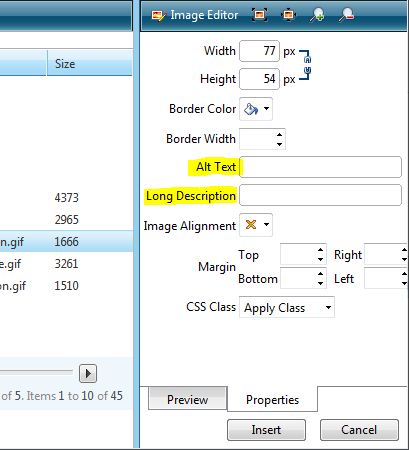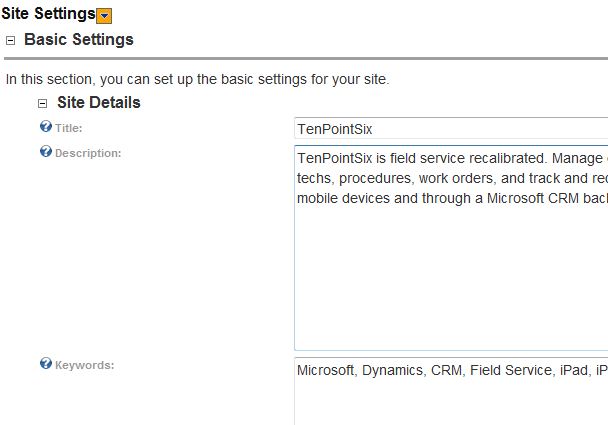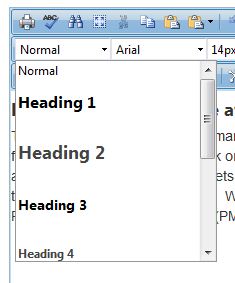DotNetNuke is easily one of the most popular ASP .Net content management (CMS) systems out there. In this post I am going to cover some of the simplest, fastest things you can do to your DotNetNuke site in order to improve SEO. If your first question was “What is SEO?” then this post is for you. If you are familiar with SEO and want a quick refresher that pertains specifically to DotNetNuke then this post is for you. If you have already carefully tuned your site and are looking for advanced optimization techniques, go hire a marketing professional with a proven track record of SEO success.
So, what is SEO? The term SEO stands for Search Engine Optimization and it essentially means tweaking your site to make it more search-friendly. A search-friendly site makes it much easier for your current and potential customers to locate your site and to find what they need on your site. The end-goal of SEO is often more specifically about getting into one of the coveted top spots in Google’s search results for a particular term or phrase. While achieving that goal usually takes a lot more than the simple tips presented in this post (for example, Google’s ranking depends a lot on the number and types of other sites that link to you), these tips will get you started on the right path and will make your site more useful and usable in the process.
DO use a DotNetNuke (DNN) skin that is web standards-based and follows current recommended practices for accessible content. A good skin will probably note that it is XHTML or HTML5 compliant and may display a small W3C icon indicating that its code validates properly. The W3C is the internationally-recognized body responsible for setting standards that govern key web technologies. A good skin will not use tables for layout. You may also see references to Section 508, which refers to standards set forth in US law for make a site accessible to all users including those using screen readers and other assistive technology. Section 508-compliant sites tend to also be extremely search-friendly as they will include additional text and meta-data to serve assistive technology that is also useful to the robots used by Google, Bing, Yahoo and others.
DON’T make any key text into an image. In fact, avoid making any text into an image at all. Search engines cannot read any text from an image, and neither can screen readers for visually-impaired users. Web font services such as Typekit, Webtype and Google Web Fonts make it easier than ever to replace images with plain text and maintain custom styling. If you must use an image for text, make sure that you properly define the alt tag of the image. This is something that is absolutely essential to do for all images on your site, not just those that contain text. In DotNetNuke you typically set up this text in the properties area when inserting an image. You can also configure an additional long description through this dialog where appropriate.

DO take advantage of the site-wide and page-level descriptions and keywords available in DNN. Most themes will use these elements in the header meta-tags of your site. While search engines never rely on keyword tags alone for indexing, these keywords can be useful for pointing out to the search engine which words on the page are particularly important. On the other hand, the description is typically used by search engines as the snippet that will be displayed in their search results. For this reason you should keep it short, to-the-point and self-explanatory. This is your chance to grab the attention of someone who is quickly scanning a search results page for relevant links. The site-wide description will often be used when no page-level description is present but you should always override it with a more specific description per page when possible to prevent the appearance of duplicate content and to give a better idea of what is actually on each page. You can set the description and keywords for the entire site in Site Settings and for an individual page while editing that page.

DON’T post misleading content, duplicate content on multiple pages or rip content from other sites on the web. Google in particular is known to penalize this type of behavior. This should be an obvious one as it is also clearly an ethical issue. The best way to attract the customers that are right for you is to post authentic, original content that benefits them in some way. If you find an article elsewhere that you think may be beneficial to your customers the best thing to do is to write your own post adding value to the discussion, including one or two short, properly-attributed quotes and linking to the full text on the original site. Who knows, this neighborly behavior could even lead to a productive relationship with the author of the content and perhaps a link back to your site from theirs at some future date.
DO update frequently, write plenty of informative text and try to include the words and phrases that you think customers will use when trying to search for the content you have written. Pay attention to the types of questions your customers are asking and how they are asking them. Try to think like a customer when writing and use the same terms that they would be likely to use when searching. Mention those things which are most distinguishing about you and that you want others to find out about you. By doing this not only will you make your content rank higher in search results but you will also make it far more relevant to your customers themselves. It is also a very good idea to include the keywords you identify in the titles of your pages or posts whenever it makes sense to do so – search engines tend to place special emphasis on URLs and titles.
DON’T rename or move pages unless absolutely necessary (and even then seriously consider creating a redirect from the old location to the new one). I should really say don’t rename or move pages ever. Changing the structure of your site can cause dead links both internally and externally. If someone has bookmarked a particular location or linked to it from a blog, web site or tweet and you move or rename that page the link will stop working and you will end up with missed opportunities and frustrated and alienated customers. Restructuring your site can also lead to a (usually temporary) search ranking penalty until your site is re-indexed by every major search provider. If you must move a page you can create a placeholder at the old location and use the DNN link/redirect options to make sure that people with only the old URL will still end up in the right place.
DO update frequently, write plenty of informative text and try to include the words and phrases that you think customers will use when trying to search for the content you have written. Pay attention to the types of questions your customers are asking and how they are asking them. Try to think like a customer when writing and use the same terms that they would be likely to use when searching. Mention those things which are most distinguishing about you and that you want others to find out about you. By doing this not only will you make your content rank higher in search results but you will also make it far more relevant to your customers themselves. It is also a very good idea to include the keywords you identify in the titles of your pages or posts whenever it makes sense to do so – search engines tend to place special emphasis on URLs and titles.
DON’T rename or move pages unless absolutely necessary (and even then seriously consider creating a redirect from the old location to the new one). I should really say don’t rename or move pages ever. Changing the structure of your site can cause dead links both internally and externally. If someone has bookmarked a particular location or linked to it from a blog, web site or tweet and you move or rename that page the link will stop working and you will end up with missed opportunities and frustrated and alienated customers. Restructuring your site can also lead to a (usually temporary) search ranking penalty until your site is re-indexed by every major search provider. If you must move a page you can create a placeholder at the old location and use the DNN link/redirect options to make sure that people with only the old URL will still end up in the right place.

DO use the semantic nature of HTML to add value to your content. An <h1> (Heading 1) tag should be the most important heading on your page. <h2> should be next and so forth, like an outline. The <p> should separate paragraphs. Addresses should be indicated with <address> and lists with <ul> (unordered) or <ol> (ordered). Links created with the <a> tag should include title attributes. Like many of the previous tips, producing well structured content helps both search engines and assistive devices parse your site with greater success. It also starts you down the path towards microformats and some of the advanced and exciting things being done with them. DNN makes at least the basics of this relatively easy without editing the actual code. You can simply choose the tag that will be used from the built in editor. When you do this, just remember that you are describing the text as well as styling it.

That’s it for today! I hope that these tips help you make your site more search- and user-friendly!